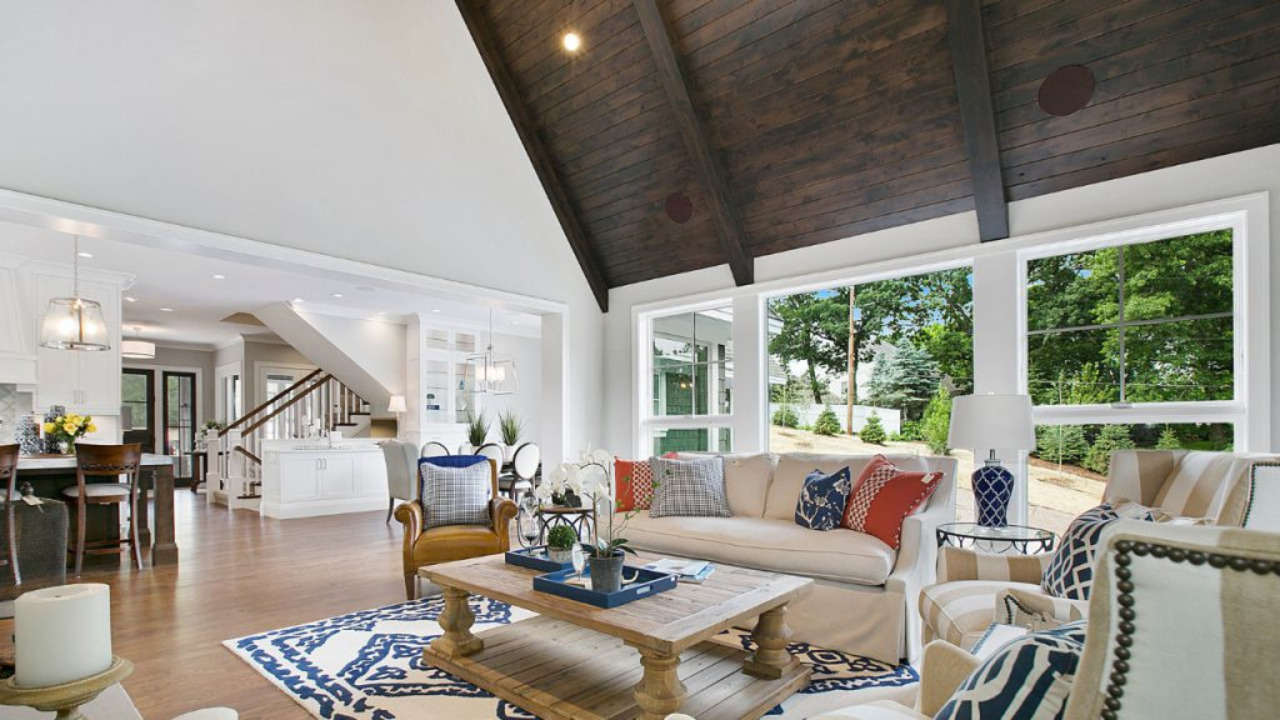When it comes to home improvement, the majority of us resort to thinking about junking old furniture, installing decorative elements, getting a new paint done, etc. But we often overlook an important architectural element i.e., the upper interior surface or ceiling. Ceilings can be of different types, ranging from coffered ceilings to tray style.
Different types of ceiling options are available for your residential and commercial space. If your house has a good clear height, coffered ceilings are a great choice for a trendy-cum-traditional look.
In this article, we will walk you through all the essential information about coffered ceilings, their types and how heavy their installation weighs on your bank.
Table of Contents
What is a Coffered Ceiling

A coffered ceiling is an architectural classic design that is characterized by interconnected recessed or sunken panels. These 3-D sunken panels can come in different geometry shapes i.e., square, rectangular, octagonal, etc. So, when you look overhead, you will see a pattern of panels embedded in the ceiling, creating a sense of capaciousness and coherence with surroundings.
The trend of coffered ceilings traces back to when Greek and Roman architecture was flourishing. Ever since then, the hype never subsided. Homeowners fancy it as a trendy option for home renovation.
However, an important factor that greatly influences the design of coffered ceilings is the height within a room – the distance between the finished floor level and ceiling level inside a room. If a room’s clear height is less, you must not consider a coffered ceiling as an option because it might make your space congested and messy.
If the clear height available in a room is 10 feet or higher, coffered ceilings will aptly do their homework by making your living space open, ventilated and comfortable.

How are Coffered Ceilings Installed
Majority of the coffered ceilings are made up of wooden cross ceiling beams laid in a repeating pattern of geometric shapes (coffers). The depth of the cross beams decides the depth of the recess in the ceiling. Greater the beam depth, greater will be the indentation in the ceiling.
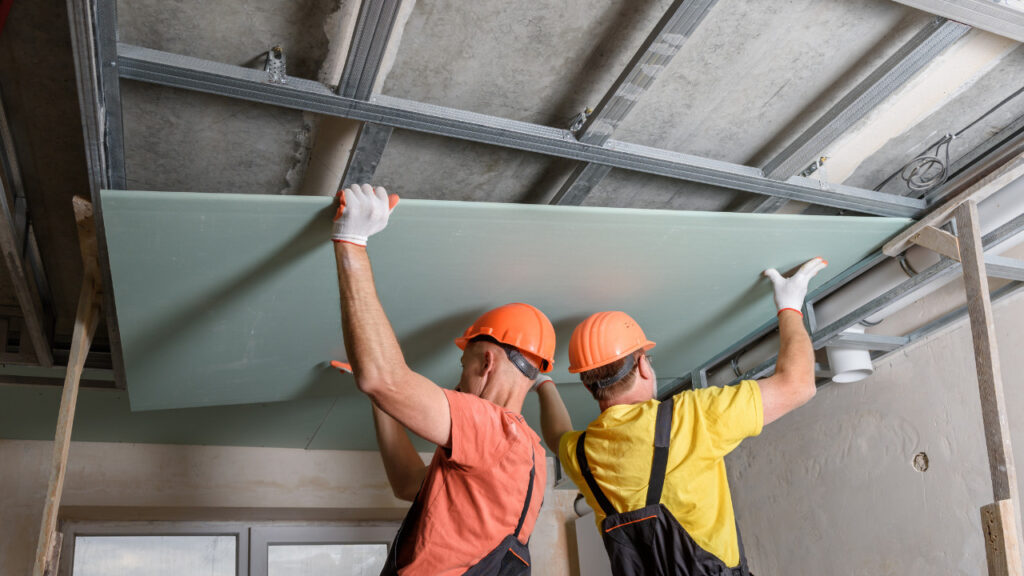
The choice of wooden beams is subject to the versatility and natural beauty of timber in construction works. However, in general, the material selection for your coffered ceiling will depend on several factors such as desired style, budget and structural considerations.
Apart from wooden coffered ceilings, fiberboards and other lightweight materials like PVC can also be used depending upon whether the ceiling is a faux one or has to bear structural loads.
The ceiling area of your room is first divided into geometric shapes by marking the layout. Following this, the beams are installed and interconnected to create recesses between them. Install the coffers or panels in the indented areas to complete the look of your room.
You can also paint the wooden beams and panels to create an integrated look that uplifts your interior.
6 Popular Types of Coffered Ceilings
The classification of coffered ceilings can be done based on the geometric shape and style imparted to the coffers (recesses). The following styles can be imitated for an exuberant look and you can also customize the geometry you want to have.
1) Square or Rectangular Coffered Ceiling

This is the traditional coffered ceiling, the origin of which can be dated to ancient Greek architecture. In this style, a pattern of repeating squares or rectangles is created by installing cross beams perpendicular to each other. This results in a grid-like pattern of equal-sized panels that create a symmetrical and balanced look.
2) Octagonal Coffered Ceiling
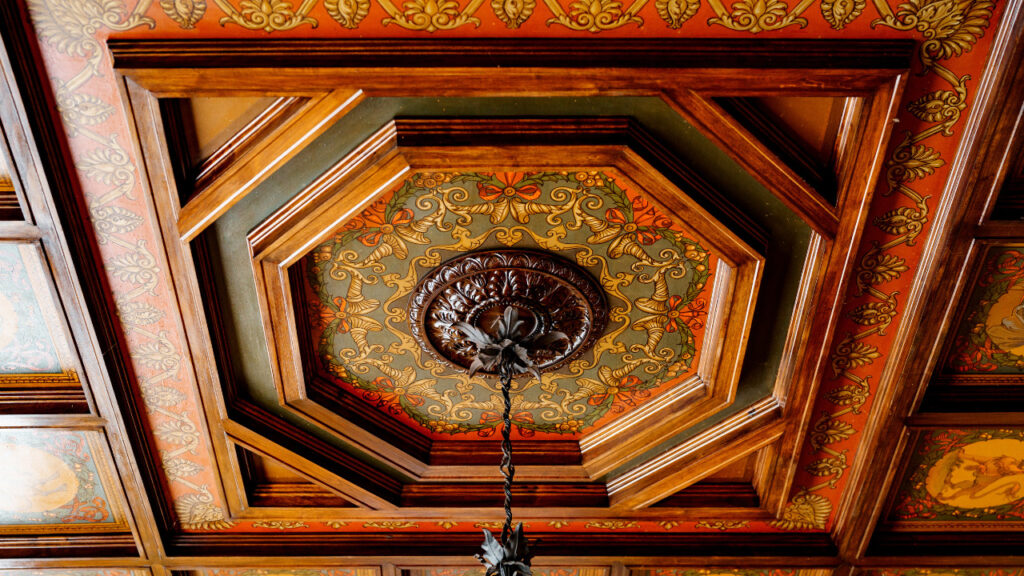
In this type of coffered ceiling, octagonal (8-sides figure) panels are created by joining the crossbeams. This geometric creates a visual appeal at first sight by adding a touch of intricacy and depth.
3) Geometric Coffered Ceiling
This type of coffered ceiling features any geometric or irregular shape other than repeating patterns of squares, rectangles and octagons. You can go for random customization to end up with a ceiling style that has a visually-striking configuration of recesses. The geometry can be of triangles, diamonds, or whatever you want to see overhead.
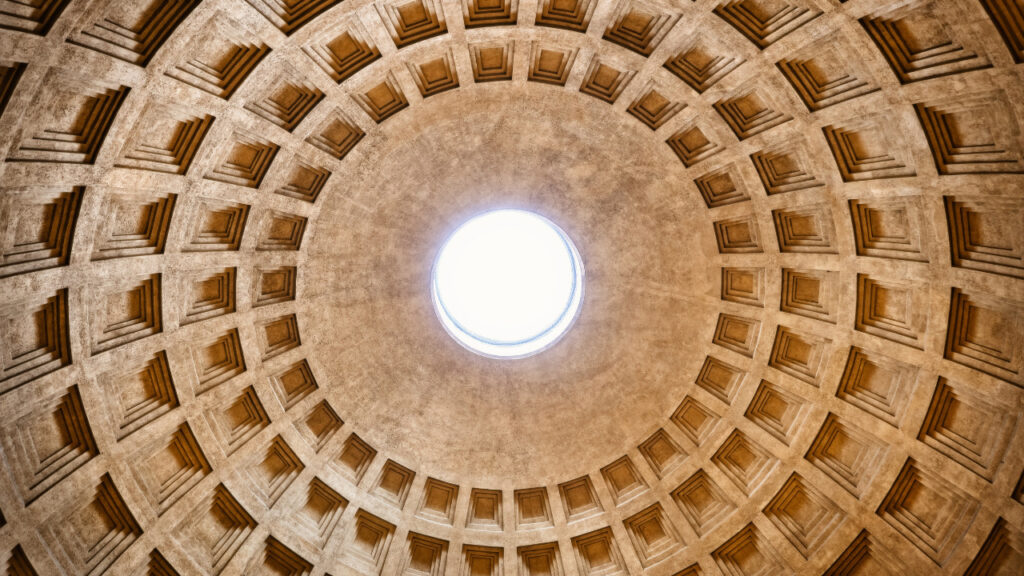
4) Dome Coffered Ceiling
This type is less frequent in residential buildings and is mostly confined to domed halls and large ballrooms. The design focuses on creating a central circular or elliptical dome surrounded by concentric rings divided into coffers. This creates a unique design that centers around a pivot and is visually attractive.
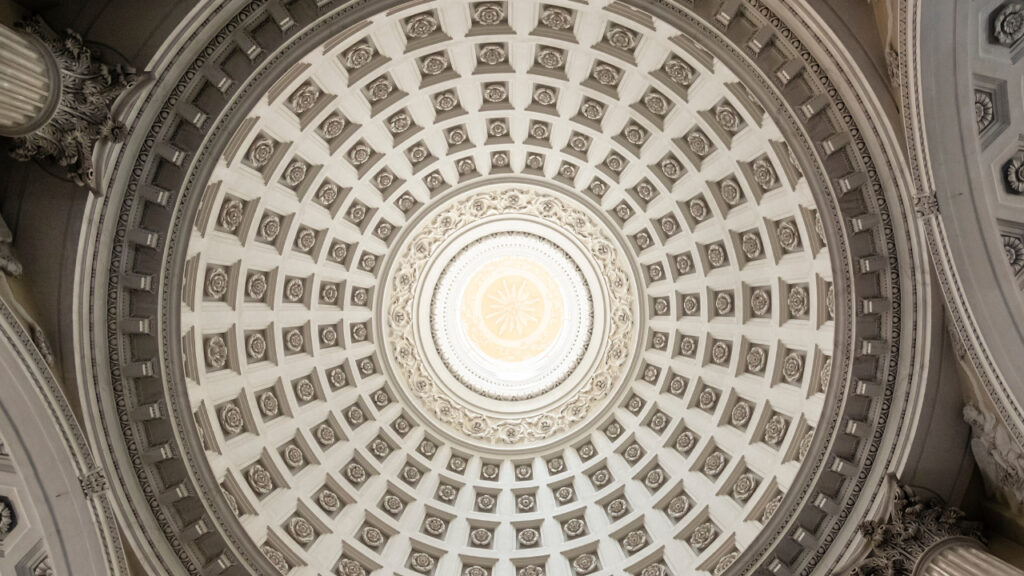
5) Barrel Vault Coffered Ceiling
In this ceiling type, the coffers or recesses are made by first creating an arched or semi-circular ceiling and then dividing it into coffers to enhance the elegance and grandeur.

6) Decorative Coffered Ceiling
Decorative elements such as motifs, murals, etc. can be attached to coffered ceilings to amplify the structural design just like adding a cherry on the top of a cake. Decorative coffered ceilings add an artistic flair to abate boredom and monotony inside the room.
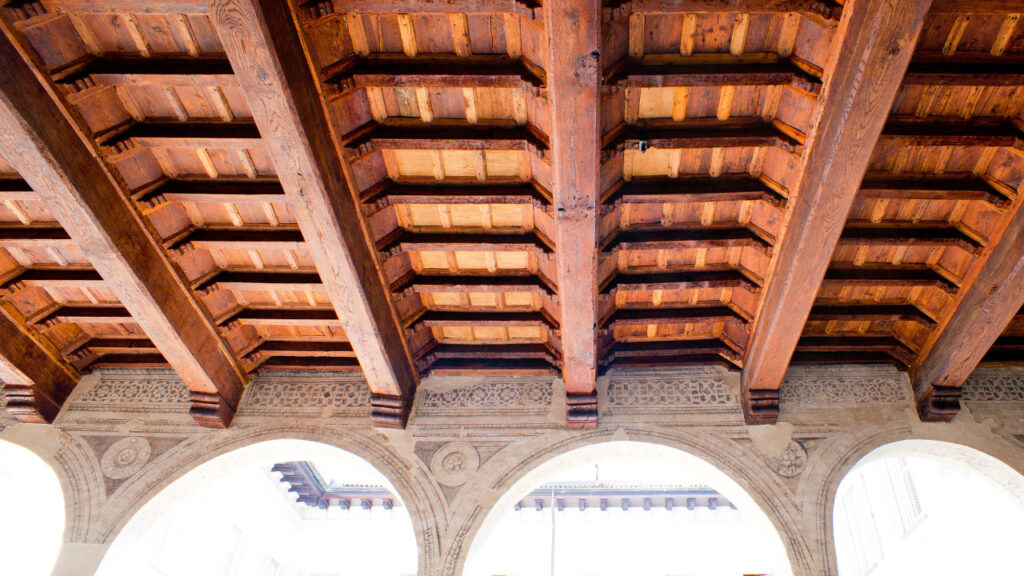
5 Advantages of Coffered Ceilings
A slight overhead can literally uplift your mood when you look at a coffered ceiling. It will not only remind you of ancient architecture but also will connect you with contemporary living trends. Some of the benefits of coffered ceiling are:
1. Enhanced Visual Appeal
The primary advantage of coffered ceilings is the aesthetic appeal and depth they provide. Also, they create a sense of spaciousness and openness inside a closed living space.
2. Reduced Reverberations
The recesses or indents in the slab can help absorb sounds, eliminating echoed voices and noise reverberations within the building.
3. Easy to Customize
This ceiling type has a lot to offer in terms of design flexibility and customization. You can tailor the style to suit your interior. From classic and traditional designs to funky or hotchpotch geometries, you can play with it.
4. Increases Property Value
The property value of any building has a direct bearing on the visual appeal of the interior. So, this means if coffered ceilings are constructed, your property value will exceed the par value owing to the architectural importance of this ceiling type.
5. Conceals Architectural Oddities
Coffered ceilings also help conceal architectural oddities in the structure. This may include any cracks, dents, or surface imperfections, hidden cleverly.
5 Factors Affecting the Cost of Coffered Ceiling Installation
The average cost of coffered ceiling installation ranges from $350 to $8,000. However, the actual installation cost depends upon several factors, including:
1. Geometric Complexity
The choice of three-dimensional geometric option and the complexity of design is the major factor affecting the price of coffered ceiling. From rectangle and octagonal to square grids the installation cost varies.
2. Material Type
The choice of material can affect the cost of the coffer ceiling installation. Material price ranges from $2 to $30 per square feet. A variety of material options are available for coffered ceiling such as drywall, poplar, plywood, maple, oak, prine, and PVC panel etc.
For instance, the cost of real hardwood starts from $20 per square foot. However, other materials such as fiberboards are relatively cheap and available at $3 to $10 per square feet.
3. Size and Height of Ceiling
The cost of coffered ceiling installation varies according to the size of living space. Also, the height of ceiling results in cost variation of conferred ceiling.
4. Customization Requirements
Cost of coffered ceiling installation also depends on the extent of customization you need. Some of the commonly used customization options are addition of decorative elements, beam painting or staining, ceiling tiles addition and wallpaper application in coffer panels etc.
5. Labor cost
In addition, labor costs will vary based on the region you live in. Hiring a skilled and experienced professional will increase your installed cost. Therefore, it is important to set a budget.
Let’s Transform Your Home into Your Dream Space!
Whether you are looking to restore an old property or looking to enhance the visual appeal of a newly built home, coffered ceiling installation can be your best bet. Coffered ceiling is one such type of ceiling consisting of grid series formed by stuck-on mouling.
Different types of coffered ceiling are available and can go well with a variety of interior styles. The cost of a coffered ceiling depends upon material selection, height of ceiling, extent of customization etc. Also, the choice of contractor can affect your ceiling cost. Make sure the contractor you choose possesses the right skill set and is sufficiently experienced.
So what are you waiting for? Get your hands on some of the trendy coffered designs and transform your home into a dream space.





